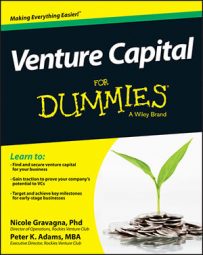It is important to connect with your potential investors when you are presenting a pitch to them. Few things are more moving than someone on stage who can connect with the audience. This is true in the theater, in dance, and also in business presentations.
There is a big difference between speaking to an audience and speaking at an audience. Your goal is to see the audience members’ faces as you speak. You need to look at each person as you deliver a sentence or two of information. If you can get their heads to nod as you tell them about your company, you know that you are making a connection.
Some groups, such as TED (a non-profit devoted to ideas worth spreading that puts on short, inspiring talks), have gotten connecting to the audience down to a science. TED, for example, requires that speakers offer something truly personal to make the audience see them as human. Then, the speaker requests a call to action.
This method — a personal connection followed by a call to action — inspires audience members to get involved. And that’s exactly what you want to happen when you ask a group of investors for money. You want the investors to understand you, your message, and your company. Then you want them to take action by initiating due diligence.
Go to the TED website to see hundreds of formulaic TED talks. They are short (under 18 minutes), draw on inspiration and emotion, and always involve a call to action.
Speak the message
Identify the one fundamental message that you want your audience to remember and then keep that message in mind, both as you create your pitch deck and as you rehearse. Your message will come through.
By focusing on one central theme as you create all your materials, you will naturally bring your points together in a way that supports that theme. Doing so helps you avoid getting distracted as you create the pitch, which can result in your arguing various points that confuse the main message.
Practice to make perfect
You will go over and over your pitch deck before calling it finished, so much so, in fact, that you may know all the points and the order in which you plan to deliver them by heart. Even then, you still need to practice.
When you have settled on a version of the pitch that you’ll present to investors (whether it’s the 5-minute, 10-minute, and 20-minute version), practice it a minimum of 20 times, start to finish. Practice it in front of your business mentors and practice it in front of your team. Videotape yourself giving the pitch and then practice it again, concentrating on eliminating any awkwardness that you noticed in the video.
Even then you won’t be done practicing. You’ll probably do your pitch 100 times or more before you close the funding round. At each practice opportunity, you have a chance to make your presentation even better, and your pitch will evolve over time. After a while, you will know this pitch so well you could deliver it backward.
The danger with a well-practiced pitch is that it can become a word-for-word memorization of a script. We’ve seen pitch presenters forget the next memorized line and simply blank out. Watching someone repeat the last two lines as a way to remember the next ones is hard; imagine what it must be like for the person who’s presenting.
A way to avoid this trap is to memorize the concepts and let the words come naturally. For example, if you know the order of your slides — that is, you know that your addressable market slide leads into your market study slide which leads into your product adoption strategy statement — you can speak confidently and naturally about the key information in each even if you blank on one particular word.
Even though you know the pitch backward and forward and could deliver it in your sleep, don’t forget to deliver your pitch to your audience with genuine desire for them to hear and receive it. Don’t just go through the motions. Imagine you are delivering words and meaning to each audience member as though you were passing them each a bagel or cup of coffee. Did they receive it?

